50 years ago today, Hiroo Onoda, the Japanese infantryman holdout finally surrendered 29 years after the end of World War II. Operating out of the remote jungles of the Philippines, Onoda followed his orders to the letter—to disrupt Allied operations on the island chain, and not surrender until his commanding officer relieved him—orders which had been given along with a promise “whatever happens, we’ll come back for you”. Well, this presented a problem for post-war Japan, because in Onoda’s own words, if Japan had lost, there shouldn’t be a post-war Japan; there should be no Japan of any kind—echoing the Imperial Army’s famous samurai-like sensibilities. READ how they got him out of there… (1974)
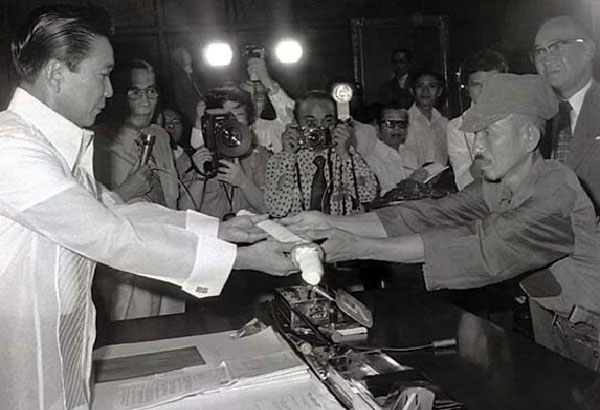
Onoda posed a serious problem to post-war Japan—he was still killing people on the island of Lubang. He and his three comrades, Private Yuichi Akatsu, Corporal Shōichi Shimada, and Private First Class Kinshichi Kozuka, believed that leaflets dropped by the Japanese government in the years following 1945 were Allied propaganda.
In 1952, letters and family pictures were dropped from an aircraft urging them to surrender, but they concluded that this was a trick. Shimada was wounded in the leg in a shoot-out with local fishermen in June 1953, after which Onoda nursed him back to health. On 7 May 1954, Shimada was killed by a shot from a police search party looking for the men. Kozuka was killed by two shots fired by local police on 19 October 1972.
On 20 February 1974, Onoda met Norio Suzuki, a Japanese “hippie guy” who was traveling around the world looking for “Lieutenant Onoda, a panda, and the Abominable Snowman, in that order”. They became friends, but the Lieutenant said he couldn’t surrender until he had orders directly from his commanding officer.
Suzuki returned to Japan with photographs of himself and Onoda as proof of their encounter, and the Japanese government located Onoda’s former commanding officer, Major Yoshimi Taniguchi, who had since become a bookseller. Taniguchi went to Lubang Island, and on 9 March 1974, he finally met with Onoda and fulfilled the promise he gave him—’we’ll come back for you’.
The Japanese government offered him a large sum of money in back pay, which he refused. When money was pressed on him by well-wishers, he donated it to Yasukuni Shrine. He left his country, considering it too soft and left-wing, and moved to Brazil where he ranched cattle for 4 years. After reading about a Japanese teenager who had murdered his parents in 1980, Onoda returned to Japan in 1984 and established the Onoda Shizen Juku (“Onoda Nature School”) educational camp for young people, held at various locations in Japan.
MORE Good News on this Date:
- Congress launched U.S. President Franklin Roosevelt’s New Deal in a special session, beginning the 100 days of legislating aimed at reversing the economic depression (1933)
- The CBS news show See It Now, produced by Edward R. Murrow, aired a report critical of U.S. Senator Joseph McCarthy, which led to the end of Communist ‘witch hunts’ on Capitol Hill (1954)
- The first Ford Mustang rolled off the assembly line at Ford Motor Company, the first sports car produced for the mass market (1964)
- The first-ever Adopt-a-Highway sign was erected on Highway 69 in Texas, promoting the Tyler Civitan Club in exchange for their promise to pick up litter along a two-mile stretch of the road (1985)
- Dr. Antonia Novello was sworn in as Surgeon General of the United States, the first female and Hispanic American to serve in that position (1990)
- The U.S. ban on using federal dollars for embryonic stem cell research was lifted (2009)
- To prevent innocent men from being unjustly killed, Illinois Gov. Pat Quinn abolished the death penalty in his state and commuted the sentences of all remaining death row inmates (2011)
- Polish mountaineers Adam Bielecki and Janusz Gołąb made the first winter ascent of Gasherbrum I (or K5), the 11th highest peak on Earth, located on the Pakistan-China border (2012)
116 years ago today, Internazionale Milano was formed from a schism with AC Milan, creating one the most successful, and most-supported football clubs in Italy and Europe. The strange name “International” came because the founding members wanted a football club open to all the “brothers of the world,” i.e. foreign players and not just Italians. For this, they chose the colors black and blue for their jersey, based on the backdrop of the “splendid night,” in which their charter was formed. They have won 35 national titles and 6 European titles.
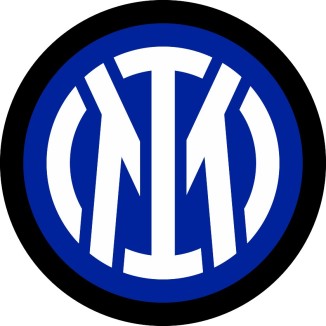
In the 1929-1930 season, Inter signed Giuseppe Meazza, one of the deadliest finishers in Italian football, who still holds the record for most goals scored in a debut season at 31. In a long career mostly with Inter, he scored 242 goals in 365 games for the club, and won three Serie A titles, as well as the Coppa Italia. The stadium where both Inter and their rivals AC Milan play, the San Siro, is officially called the Giuseppe Meazza Stadium.
Another purple patch came for the club in the 60s, when they appointed the French/Argentine manager Helenio Herrera, who brought with him a unique Austrian formation and play style governed by one of the best midfielders in the world at the time, Luis Suarez. The method was a success that by 1963 won them the Serie A title, and back-to-back European Cups in 1964 and 1965.
Early in the 2000s Inter won two Serie A titles and belief was growing that a period of dominance was again within their grasp. On 2 June 2008, Inter appointed former Porto and Chelsea boss José Mourinho as the new head coach. In his first season, Inter won a Suppercoppa Italiana and a fourth consecutive title. The following season, Mourinho completed an unprecedented treble—the national league title, domestic cup, and European cup, becoming the first Italian side in history to do so. (1908)
248 years ago today, the Scottish economist Adam Smith published An Inquiry into the Nature and Causes of the Wealth of Nations, one of the first great treatises in economics, called “the most important substantive proposition in all of economics,” by George Stigler. Most commonly referred to as simply The Wealth of Nations, this shortening diminishes the book’s true value, namely it was the first time that a scientist or philosopher stopped asking “why is there poverty,” and instead asked “why is there wealth?” a much harder question to answer. Smith’s conclusion was that between nations of equal standing, culture, and population, some are wealthier than others because of the degree to which they allow for individual economic pursuits. The treatise lays out some of the most fundamental economic laws and helped inform some of the greatest advancements in human prosperity ever seen.
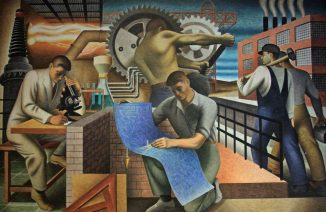
Among the famous laws and principles set down in Smith’s inquiry, was “The Invisible Hand.” Smith wrote, albeit just one time, that when left to pursue their own interests through the legal means of bargain and exchange, each individual in society inadvertently advances the general prosperity as if “led by an invisible hand.” In short, because free and voluntary exchange leaves both parties better off, the unending and instantaneous multiplication of these exchanges continues to multiply the general welfare.
He also set down the law of the division of labor, which states that the greater the specialization of a task, the greater the output of production, i.e. if 20 people each have to build one car, society will accumulate 20 cars far slower than if those 20 people instead learn to make a single part of a car. Division of labor also states that through specialization, the natural inadequacies and inequalities of national fortune can be averted. Rather than trying to match Spain in the production of oranges, Scotland need only master production of salmon, and then use the excess in exchange for oranges.
Finally, Smith put forward the case for free trade between nations during a time when protectionism was much in vogue. By importing/exporting goods and earning foreign currency, it allows entrepreneurs access to the unique benefits of foreign markets. Importing foreign goods was seen as damaging to the national labor, but Smith showed that it instead builds wealth, not only by out-rightly saving producers, states, or merchants money, otherwise they would not be seeking to buy abroad, but that by exporting, the imports themselves are easier to pay for. (1776)
And 65 years ago today, the Barbie doll made her debut at the International Toy Festival

The lifelike doll that looked like a young adult made the Mattel company—and Barbie—a household name. After decades of criticism over the brand’s lack of physical diversity, the company rolled out Barbie dolls with a wide variety of body shapes and complexions—and a collection that honors prominent women heroes. They also offered a bald doll for kids whose hair falls out. (1959)
183 years ago today, the U.S. Supreme Court ruled in support of a group of Africans who had been kidnapped and sold into slavery. The Amistad case resulted from the rebellion on board the Spanish schooner La Amistad in 1839. It was an unusual freedom suit that involved international issues and parties, as well as US law, and was perhaps the most important court case involving slavery before Dred Scott 16 years later.
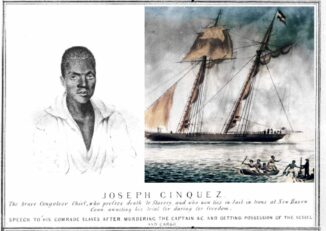
The schooner was traveling along the coast of Cuba with captives who were to be re-sold at the next port. The Mende people, who were taken against their will from Sierra Leone, escaped their shackles and took over the ship. They killed the captain and the cook and directed the two Spanish navigator survivors to return them to Africa. The crew tricked them, sailing north at night and the ship was apprehended by a U.S. coastal patrol near Long Island, New York. The court case became a beacon for the abolitionist anti-slavery movement, and it was dramatized in the Spielberg film starring Morgan Freeman, Matthew McConaughey, and Anthony Hopkins. (1841)
Viewed under the terms of laws and treaties against the international slave trade (which the US and Britain had been following for three decade), the captives were ruled to have acted as free men when they fought to escape their kidnapping and illegal confinement—entitled to take whatever legal measures necessary to secure their freedom, including the use of force.
Abolition activists arranged for temporary housing of the Africans in Farmington, Connecticut, and raised funds for their return voyage, and one year later the 35 who wanted to return to Sierra Leone set sail as free men.
Also, 29 years ago today, Britain’s Queen Elizabeth II made a symbolic visit to Northern Ireland, celebrating the peace that had been created one year earlier by a ceasefire between the IRA and Loyalists. Two years later, the Good Friday peace agreement would end decades of bloodshed. (1995)
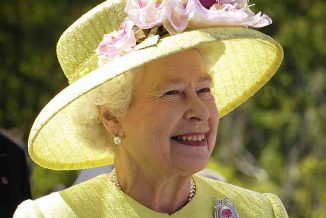
And, 64 years ago today, Belding Scribner implanted a breakthrough device that he invented that would, for the first time, make routine kidney dialysis a reality and save millions of lives. The ‘Scribner shunt’ saved people with end-stage kidney disease, including his first patient, Clyde Shields, who survived with chronic kidney failure for more than eleven years.
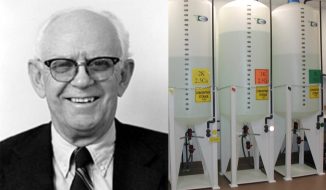
Made of Teflon, the shunt could be permanently installed in a patient’s arm, protecting their veins from the process of dialysis, which purifies the blood of a person when their kidneys stop functioning. Before Scribner’s invention, dialysis was a painful operation that could only be completed 5-7 times before damage to arteries and veins made future treatments impossible. “I literally woke up in the middle of the night with the idea of how we could save these people,” said Dr. Scribner.
A University of Washington medical professor and director for decades, the school’s alumni magazine tells his story this way: “A chance encounter in a stairwell with a UW surgeon introduced him to the idea of using Teflon as a material for the permanent implant. A U-shaped tube was sewn between an artery and a vein in the arm. An opening in the tube then provided a space where the dialysis machine could be plugged when in use. The material was later changed to silicone but the shunt flipped the disease from 90 percent fatal to 90 percent survivable”.
Not only did Scribner change kidney failure from a fatal disease to a treatable one, he created the world’s first community outpatient dialysis treatment center. To provide dialysis on a routine basis outside a research setting, Dr. Scribner turned to the King County Medical Society for sponsorship of a community-supported outpatient dialysis center. As a result, the Seattle Artificial Kidney Center was established in January 1962. Eventually renamed Northwest Kidney Centers, its outpatient care has been the standard dialysis delivery model worldwide ever since.
He wrote many papers and books after his retirement and died in 2003 at age 82. (1960)
SHARE the Milestones, Memories, and Music…




















[…] post Good News in History, March 9 appeared first on Good News […]
[…] Source: Good News Network […]